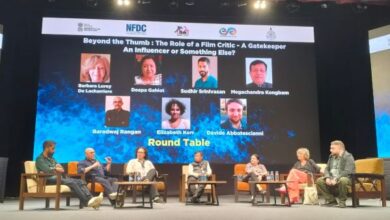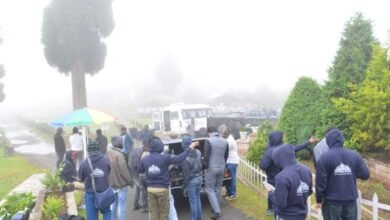Silver screen captures horror of development
Seven films screened at St Edmund's College speak about environment degradation, govt apathy, resilience and hope

Shillong, Aug 6: In 2022, UN Secretary-General Antonio Guterres, while addressing world leaders and participants at COP27, said, “We are on a highway to climate hell with our foot on the accelerator.”
If these words do not stir up a government or nation from its slumber to act immediately, then we can only conclude that each one of us is living in a make-believe world where words like climate change and pollution are non-existent.
However, seven films, curated by Sauramandala Foundation, in collaboration with All Living Things Environmental Film Festival (ALT EFF), screened at St Edmund’s College on Tuesday can visually establish the grave danger that human civilisation is facing.
The films — which focused on existing problems, resilience, hope, and the heterogeneity of the space that humans share with numerous other species — highlighted the imminent danger that humanity is facing. Some of the films directly resonated with the environmental issues at home.
For instance, Jamna: The River Story, a documentary on the River Yamuna in Delhi, directed by Ishani K Dutta, reminded one about the degrading Umiam Lake. The lake is burdened with the entire Shillong city’s waste that is killing aquatic life. The state government has initiated an effort to use an AI-powered robotic boat to clean the lake. However, the question remains whether this initiative is being continued and how effective it has proved.
Another movie that was relevant in the context of Meghalaya was From Dreams to Dust, another documentary that traces the life of nickel miner Pola in Indonesia. Directed by Stephanie Tangkilisan, the movie reminds viewers of Meghalaya’s rat-hole mining, which has been banned, or is it? Recently, there were media reports about coal mining inside the Balpakram National Park. Reports about illegal coal transportation and vanishing coal have become the norm. Despite extensive media reports about the ill effects of mining in the hilly terrain, the government has refused to take any meaningful action and instead introduced so-called scientific mining. But who is the monitoring body? Who will be accountable if an accident occurs? Does the government have any plan to rejuvenate the lost green cover?
The questions linger with no answer from the authorities. From Dreams to Dust captures the horror of large-scale and mindless mining and how the lowest stratum of society is being affected by it.
The Egret River, a metaphorical animation film directed by Wan-Ling Liu, showed how the rush for concretisation is destroying the ecology around us and leaving a debilitating impact on civilisation.
The film can also be discussed in the local context. The vanishing urban greenery and the mushrooming concrete multi-storeyed buildings replacing the quaint Assam-type houses, which are compatible with the climatic conditions in the region, are examples of development at the cost of the environment.
The other films screened at the event were Krem Umladaw: The Descent into Darkness, Beautiful Poison, The Ngamees (Fisherfolks) of the Last Wetlands and Gutter Ki Machhli (Fish from the Sewer). Each film had a deep impression on the young audience, who shared their views during the open floor discussion.





